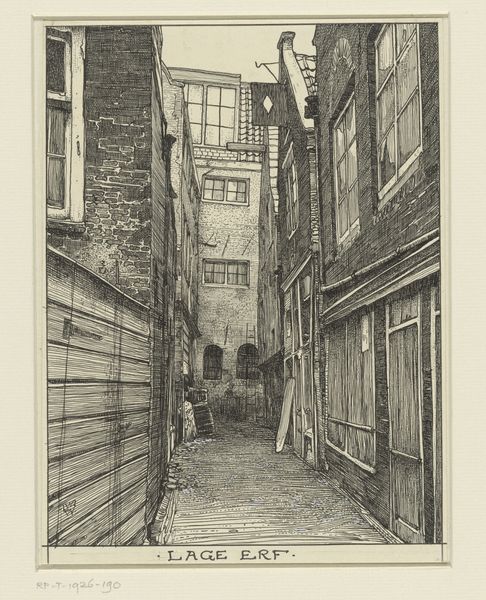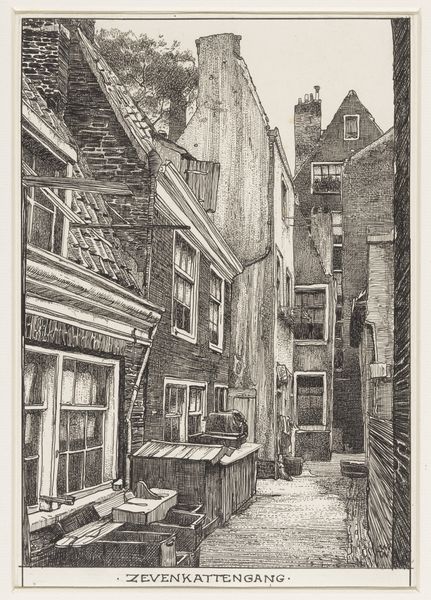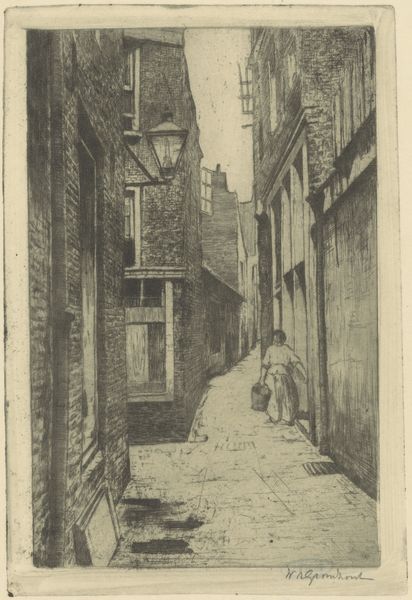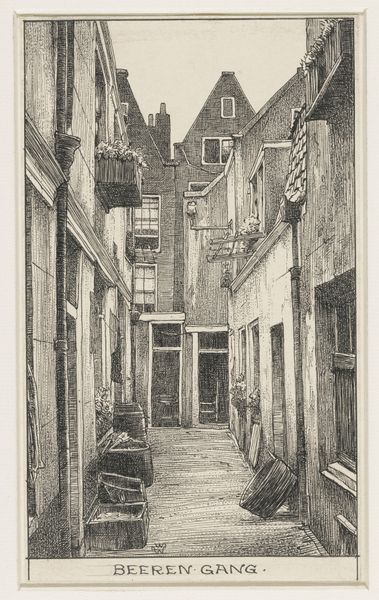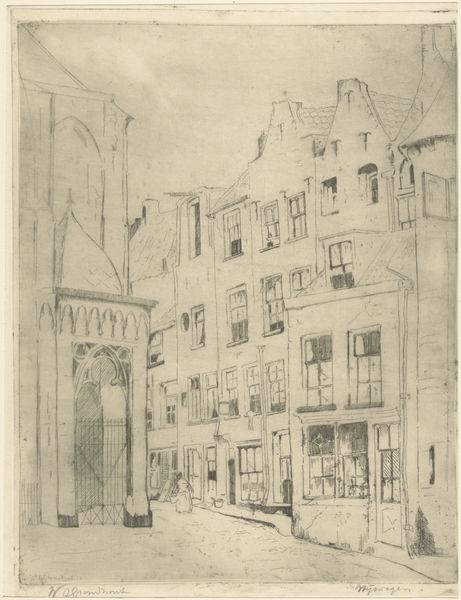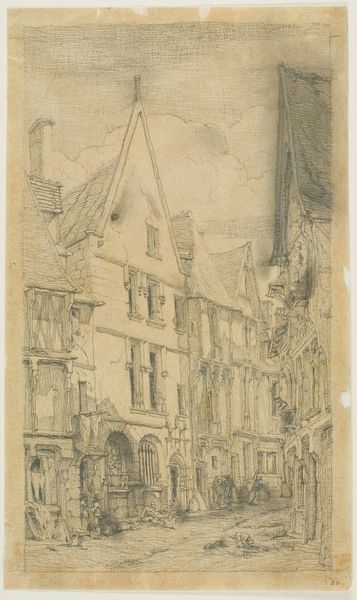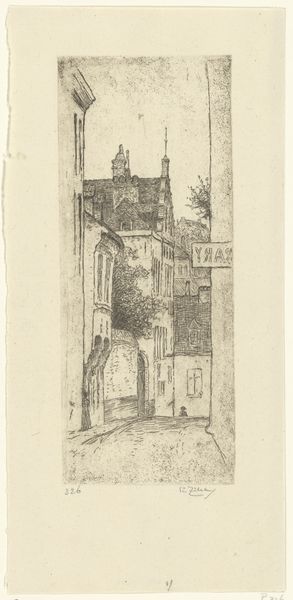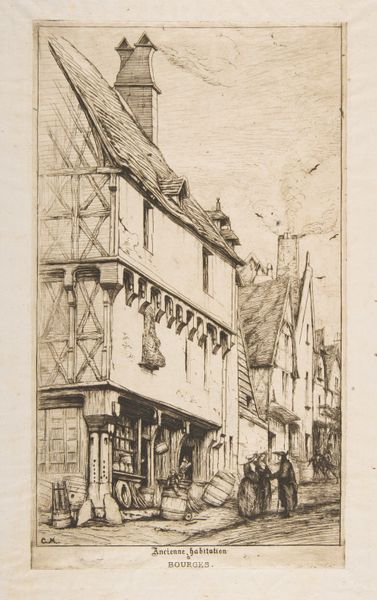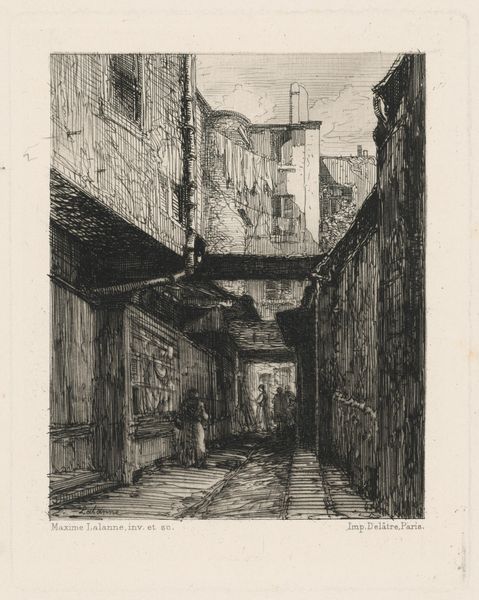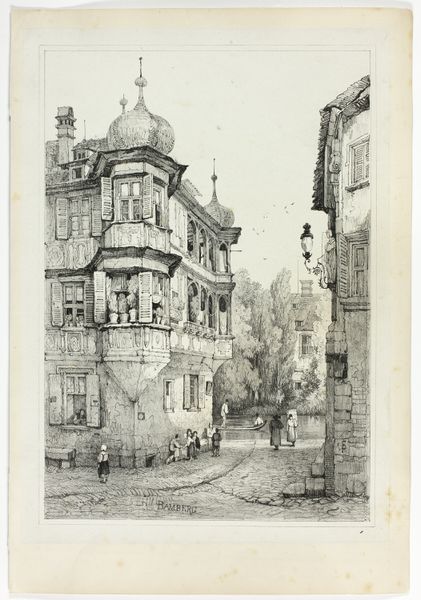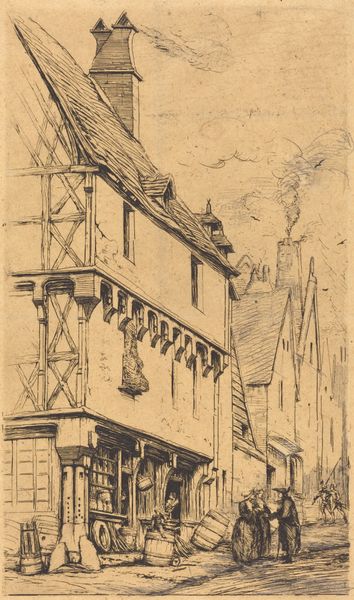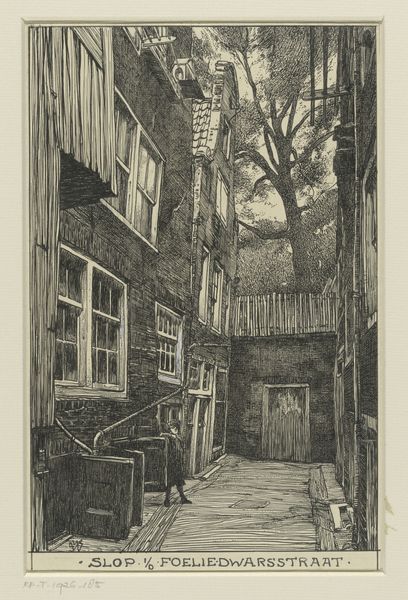
drawing, ink, architecture
#
drawing
#
16_19th-century
#
landscape
#
ink
#
architecture
#
realism
Copyright: Public Domain
Editor: Here we have Julius Knoblauch's "Treppe im Haus Limpurg zu Frankfurt am Main," made in 1878. It's an ink and wash drawing, depicting a spiral staircase within a courtyard. I’m immediately struck by how the artist uses light and shadow to create such a dramatic architectural portrait. What do you see in this piece from a historical point of view? Curator: It's fascinating to consider how Knoblauch represents Frankfurt’s architecture at a time of rapid modernization. These historic buildings, including the Haus Limpurg, were under threat, their spaces potentially at odds with the city’s increasingly bourgeois sensibilities. Consider this work, therefore, as an act of preservation, perhaps even resistance. Do you see how the artist focuses intently on the pre-modern? Editor: That's a compelling interpretation. So the drawing becomes a kind of visual argument for preserving Frankfurt’s heritage, against the backdrop of progress. The choice of such a traditional medium like ink wash would emphasize that too, right? Curator: Precisely. The ink and wash medium carries its own historical weight. The delicate details, painstakingly rendered, offer a sharp contrast to the industrial aesthetics that were beginning to dominate. What's interesting is that, while realistic in style, Knoblauch has also composed this scene very carefully to enhance the drama of the architecture itself, almost turning a documentary piece into a stage set. Editor: It’s like he is framing Frankfurt’s architectural history, giving it a starring role on the cultural stage. This makes me consider how documentation is rarely ever neutral and highlights Knoblauch’s own valuing of traditional artistic and architectural conventions. Curator: And isn’t that exactly what art history helps us see – that even what appear to be straightforward depictions are always intertwined with cultural values and perspectives. It's not just about what's depicted, but why and how. Editor: Right! Now I’m looking at it and seeing that the building isn’t simply presented but actively valorized. It highlights the intersection of artistic practice and historical awareness. Thanks, that was great.
Comments
No comments
Be the first to comment and join the conversation on the ultimate creative platform.
